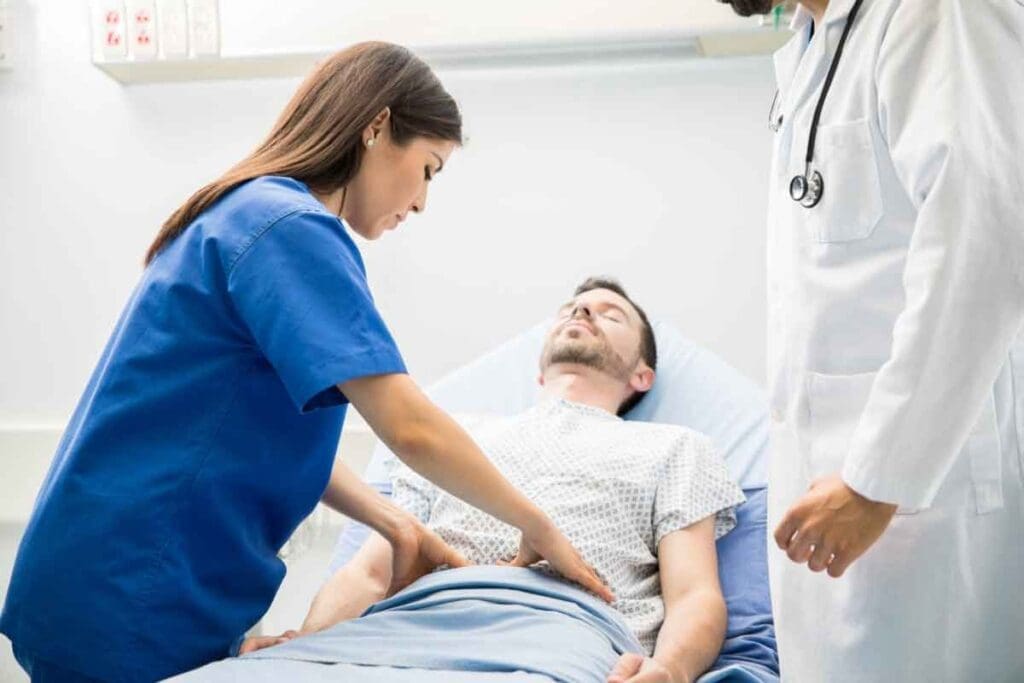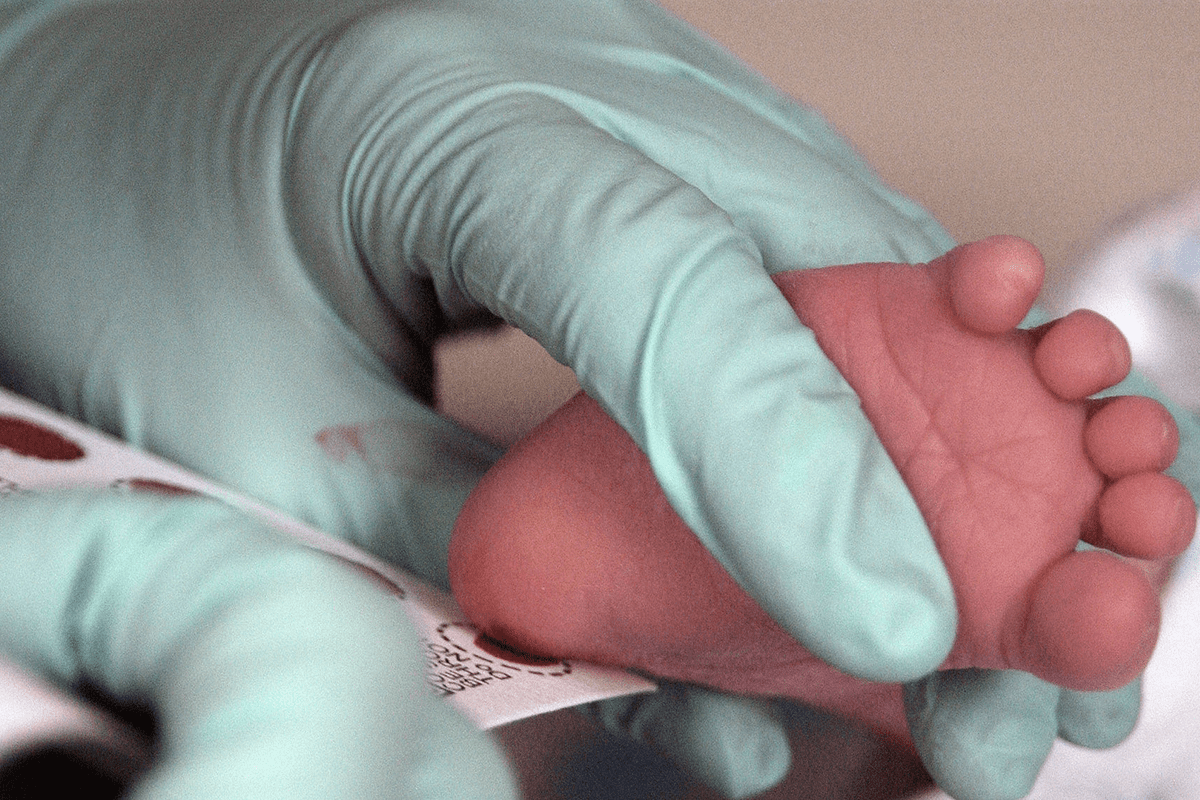Last Updated on November 26, 2025 by Bilal Hasdemir

An aortic aneurysm diagnosis can feel daunting, but early detection and individualized care lead to excellent outcomes, and modern options for aneurysm aorta treatment include careful surveillance, lifestyle and blood‑pressure control, and timely repair with either minimally invasive endovascular aneurysm repair (EVAR) or traditional open surgery. EVAR uses a stent‑graft delivered through the groin to seal the aneurysm from inside, offering shorter hospital stays and faster recovery, while open repair remains the durable choice for certain anatomies, connective‑tissue disorders, or infected grafts. Decisions are based on aneurysm size and growth rate, location (abdominal or thoracic), patient age, comorbidities, and imaging features such as neck length and vessel quality. Liv Hospital follows international standards with multidisciplinary vascular and cardiac teams, advanced imaging, and structured follow‑up to monitor for endoleaks after EVAR and graft integrity after open repair. Patients can optimize results by controlling blood pressure, stopping smoking, managing cholesterol, taking antiplatelet or statin therapy when prescribed, and keeping scheduled ultrasound or CT surveillance. Discuss the benefits, risks, and durability of each approach with your vascular surgeon to choose the safest, most effective plan for your specific anatomy and goals.
Key Takeaways
- Early detection is key to managing aortic aneurysms well.
- Personalized care is vital for the best results.
- Advanced treatment options include open surgery and less invasive methods.
- Liv Hospital offers patient-centered care that meets international standards.
- You’ll have access to the latest treatment techniques and trusted advice.
Understanding Aortic Aneurysms

An aortic aneurysm is a serious condition where the aorta, the main artery, gets too big. This happens when the aortic wall weakens, causing a bulge. If not treated, this bulge can burst.
What Is an Aortic Aneurysm?
An aortic aneurysm can happen anywhere along the aorta. It can be in the chest or the belly. The risk depends on where it is, how big it is, and how fast it grows. Knowing about an aortic aneurysm helps doctors decide the best treatment.
Types of Aortic Aneurysms
Aortic aneurysms are divided by where they happen and what they look like:
- Abdominal Aortic Aneurysms (AAA): These are more common and happen in the belly.
- Thoracic Aortic Aneurysms (TAA): These happen in the chest and can affect different parts of the aorta.
- Thoracoabdominal Aortic Aneurysms: These go from the chest to the belly.
Global Prevalence and Risk Factors
Worldwide, about 4 to 8 percent of people have aortic aneurysms. Men and people over 65 are more likely to have them. Smoking, high blood pressure, hardening of the arteries, and family history are risk factors. Early detection and treatment are key, mainly for those at high risk.
It’s vital to know about these risks and how common they are. This helps us take steps to prevent them and get help early.
Diagnosing Aortic Aneurysms

To find an aortic aneurysm, doctors use tests and images. We’ll look at how they do this. We’ll also talk about what works best and what doesn’t.
Screening and Detection Methods
There are many ways to find aortic aneurysms. Here are a few:
- Ultrasound: This test uses sound waves to see the aorta. It’s safe and works well for first checks.
- Computed Tomography (CT) scans: These scans give detailed pictures of the aorta. They help find the size and spot of the aneurysm.
- Magnetic Resonance Imaging (MRI): MRI gives clear pictures of the aorta without harmful radiation. It’s good for detailed looks.
Aortic aneurysms are often found during exams or tests for other reasons. Finding them early is key to managing them well.
Determining Aneurysm Size and Growth Rate
After finding an aneurysm, knowing its size and how fast it’s growing is important. Imaging studies help a lot with this.
| Imaging Modality | Advantages | Limitations |
| Ultrasound | Non-invasive, safe, and relatively inexpensive | Limited detail for complex aneurysms |
| CT Scan | High detail, useful for complex aneurysms | Involves radiation and contrast dye |
| MRI | High-resolution images without radiation | More expensive, not suitable for all patients |
Risk Assessment for Treatment Planning
Knowing the risk of an aortic aneurysm is key to choosing the right treatment. The size, growth rate, and health of the patient are all important.
We use test results to figure out the risk and plan treatment. This plan might include watching it, making lifestyle changes, or surgery. It depends on the aneurysm and the patient’s health.
Comprehensive Aneurysm Aorta Treatment Approaches
Treating aortic aneurysms requires a detailed plan for the best results. The treatment choice depends on the aneurysm’s size, growth rate, and the patient’s health. It also considers the patient’s preferences.
Treatment Decision Factors
Several important factors guide the treatment of aortic aneurysms. These include the aneurysm’s size, growth rate, the patient’s age, and any health issues. Getting these factors right is key to choosing the right treatment.
The aneurysm’s size is a big deal. Larger ones are more likely to burst and need quick action. The growth rate matters too. Fast-growing aneurysms might need treatment sooner.
| Factor | Influence on Treatment Decision |
| Aneurysm Size | Larger aneurysms are more likely to require surgical intervention |
| Growth Rate | Rapidly expanding aneurysms may necessitate earlier treatment |
| Patient Age and Health | Older patients or those with significant comorbidities may require more conservative management |
Watchful Waiting vs. Intervention
The choice between watching and acting depends on the aneurysm and the patient. Watching involves regular checks with imaging to see how the aneurysm grows. This is good for smaller ones.
For bigger or fast-growing aneurysms, action is needed. Surgery, like open repair or EVAR, might be the best option.
Individualized Treatment Planning
Every patient with an aortic aneurysm needs a treatment plan that fits them. This means looking at each patient’s unique situation and planning the treatment carefully.
By treating aortic aneurysms in a detailed and personal way, doctors can help patients get better. This approach also lowers the chance of problems.
Non-Surgical Management Strategies
For many, non-surgical management is the first step against aortic aneurysm growth. This method slows the aneurysm’s growth through lifestyle changes, medication, and regular checks.
How to Stop an Aortic Aneurysm from Growing
It’s key to slow an aortic aneurysm’s growth to avoid serious issues. Studies show managing risk factors can help. Controlling blood pressure and cholesterol is essential.
Blood Pressure Management is vital in slowing aneurysm growth. High blood pressure adds stress to the aortic walls, speeding growth. Work with your doctor to manage blood pressure through lifestyle and medication.
Blood Pressure Management
Effective blood pressure management is a multi-step process. It includes regular checks, a healthy diet, exercise, stress reduction, and medication if needed. The goal is to keep blood pressure in a safe range to prevent aneurysm growth.
| Blood Pressure Category | Systolic BP (mmHg) | Diastolic BP (mmHg) |
| Normal | Less than 120 | Less than 80 |
| Elevated | 120-129 | Less than 80 |
| Hypertension Stage 1 | 130-139 | 80-89 |
Cholesterol Control and Medication Options
Controlling cholesterol is critical in managing aortic aneurysms. High LDL cholesterol can lead to atherosclerosis, linked to aneurysm development. A heart-healthy diet and cholesterol-lowering meds may be recommended.
Lifestyle Modifications
Lifestyle changes are key in managing aortic aneurysms without surgery. Quitting smoking, staying at a healthy weight, exercising, and eating well are important. These actions help manage the aneurysm and improve heart health.
By following these non-surgical strategies, patients can slow their aneurysm’s growth. Regular check-ups with healthcare providers are vital to track the aneurysm’s size and adjust treatment plans as needed.
Open Surgical Repair: The Gold Standard
Open surgical repair is seen as the best way to treat aortic aneurysms. This major surgery replaces the aneurysm with a synthetic graft. This stops further rupture or complications.
Procedure Overview and Technique
The open surgical repair is complex and needs a lot of skill. The surgery makes an incision in the abdomen to reach the aorta. Then, the aneurysm is clamped and replaced with a synthetic graft.
This graft is sewn in place. It makes sure blood flows through it, not the aneurysm. This lowers the risk of rupture.
The technique can change based on the aneurysm’s location and size, and the patient’s health. Surgeons might use different methods, like a midline incision or a retroperitoneal approach, to get to the aorta.
Candidate Selection for Open Repair
Not every patient is right for open surgical repair. The choice to have open repair depends on several things. These include the aneurysm’s size and location, the patient’s age, health, and any other health issues.
Patients with big aneurysms or those at risk of rupture are often good candidates. Younger patients or those with fewer health problems might also be recommended for open repair. This is because they can handle the surgery better and recover faster.
Recovery and Rehabilitation Process
The recovery and rehabilitation after open surgical repair are key to the patient’s success. Patients usually spend a few days in the ICU after surgery. They are watched closely for any problems.
After leaving the ICU, patients stay in the hospital for more days. They get care for pain, watch for complications, and start to get stronger and move better. It takes several weeks for most patients to fully recover.
Long-term Outcomes and Success Rates
Open surgical repair is known for its success in treating aortic aneurysms. Studies show that patients who survive the first few days after surgery have good long-term survival rates.
It’s important to have regular check-ups to watch the graft and catch any problems early. The patient’s long-term outcome can depend on their health, any other health issues, and following the care instructions after surgery.
Endovascular Aortic Aneurysm Repair (EVAR)
EVAR has changed how we treat aortic aneurysms. It’s a less invasive method that uses an endograft to block blood flow to the aneurysm. This stops it from growing and bursting.
Minimally Invasive Approach Explained
EVAR is done through small cuts in the groin, not a big cut in the belly. This means less pain and a faster recovery than traditional surgery.
We use imaging to guide the endograft into the aneurysm. The graft fits tightly, making sure blood flows through it and not into the aneurysm.
EVAR vs. FEVAR: Key Differences
EVAR treats aneurysms below the kidneys. FEVAR is for more complex cases involving the kidneys or other vital arteries. FEVAR has special openings to keep blood flowing to important organs.
The main difference is where and how these procedures are used. EVAR is simpler, while FEVAR is more complex.
| Procedure | Aneurysm Location | Technical Complexity |
| EVAR | Infrarenal | Lower |
| FEVAR | Juxtarenal or Suprarenal | Higher |
Benefits and Limitations
EVAR reduces risks and shortens hospital stays. But, it can cause problems like endoleaks and graft migration. Patients also need ongoing checks.
We check if EVAR is right for each patient. We look at the aneurysm, blood vessels, and overall health.
Post-Procedure Monitoring Requirements
After EVAR, patients need regular scans to watch the aneurysm. This helps catch any issues early. It’s key to keeping the graft working right.
We help patients follow up closely. This helps avoid problems and keeps them safe.
Emergency Treatment for Ruptured Aneurysms
Ruptured aneurysms are serious and need quick treatment to save lives. When an aortic aneurysm bursts, it can cause severe bleeding inside the body. This bleeding is very dangerous and must be stopped right away.
Symptoms of a Ruptured Aneurysm
It’s important to know the signs of a ruptured aneurysm to get help fast. Common signs include:
- Severe, sudden pain in the abdomen or back
- Low blood pressure
- Rapid heart rate
- Fainting or loss of consciousness
The University of Utah Health says a ruptured aneurysm is a medical emergency. If you see these symptoms, call for emergency help immediately.
Emergency Surgical Interventions
There are two main surgeries for ruptured aneurysms: open surgery and endovascular repair. The choice depends on the patient’s health and the aneurysm’s details.
| Treatment Option | Description | Recovery Time |
| Open Surgical Repair | A traditional surgical approach involving a large incision to repair the aneurysm. | 6-12 weeks |
| Endovascular Repair | A minimally invasive procedure using a stent graft to repair the aneurysm. | 2-6 weeks |
Emergency surgical interventions are key in treating ruptured aneurysms. The goal is to stop the bleeding and ensure blood flow to important organs.
Survival Rates and Recovery Expectations
The chance of survival for ruptured aneurysm patients varies. It depends on how fast they get medical help and their overall health. Quick treatment can greatly improve survival chances.
Recovery times also vary. Some patients need a lot of rehab. The type of surgery, the patient’s age, and their health before the surgery all play a role in recovery.
Dealing with a ruptured aneurysm is tough. Our team is dedicated to giving the best care and support. We aim for the best outcomes for our patients.
Post-Treatment Care and Long-Term Management
The journey doesn’t end after aortic aneurysm treatment; it’s just the start of a critical phase. Effective management during this time is key. It helps prevent complications and ensures the treatment’s long-term success.
Follow-up Imaging and Monitoring Protocols
Regular imaging and monitoring are vital after treatment. These steps help catch issues early. This allows for quick action. We suggest a structured follow-up plan that includes:
- Regular CT scans to monitor the aneurysm’s size and check for any endoleaks or other complications.
- Periodic check-ups with your healthcare provider to assess overall health and address any concerns.
- Lifestyle counseling to support long-term health and well-being.
Managing Potencial Complications
Even with successful treatment, some patients may face complications. We will discuss common issues and strategies for managing them.
| Complication | Management Strategy |
| Endoleak | Close monitoring, possible additional endovascular procedures. |
| Graft Migration | Regular imaging to detect early, possible secondary interventions. |
| Infection | Antibiotic therapy, possible surgical intervention. |
Quality of Life After Aortic Aneurysm Treatment
Maintaining a good quality of life after treatment is a top priority. We stress the importance of lifestyle changes. These include:
- Dietary Changes: Eating a heart-healthy diet full of fruits, vegetables, and whole grains.
- Exercise: Doing regular, moderate physical activity as advised by your healthcare provider.
- Smoking Cessation: Quitting smoking to lower the risk of more vascular problems.
By focusing on these areas, patients can greatly improve their quality of life. They can also lower the risk of future complications.
Conclusion: Advances in Aortic Aneurysm Treatment
Recent breakthroughs in treating aortic aneurysms have greatly improved patient results. University of Utah Health notes that new endovascular methods and personalized medicine are changing the game. These advancements mean less invasive treatments, faster recovery times, and higher survival rates.
The future looks bright for aortic aneurysm treatment. With ongoing research, we’ll see even better treatments. This includes more advanced endovascular repairs and treatments tailored to each patient. This means doctors can focus on what each person needs.
By using these new treatments, we can give patients the best care possible. We’re dedicated to keeping up with the latest research. This way, we can offer top-notch healthcare and support to patients from around the world.
FAQ
What is an aortic aneurysm and how is it treated?
An aortic aneurysm is a bulge in the aorta, the main blood vessel. It carries blood from the heart. Treatment depends on the aneurysm’s size and growth, and the patient’s health. It may include watchful waiting, open surgery, or endovascular techniques like EVAR.
How do you determine the size and growth rate of an aortic aneurysm?
Imaging tests like ultrasound, CT scans, or MRI show the aneurysm’s size and growth. These tests help healthcare providers plan the best treatment.
What are the risk factors for developing an aortic aneurysm?
Risk factors include age, smoking, high blood pressure, family history, and certain genetic conditions. Men are more likely to get an aortic aneurysm than women.
How can I stop an aortic aneurysm from growing?
Managing blood pressure and cholesterol is key. Lifestyle changes and medication can help. Regular check-ups are also important to prevent complications.
What is the difference between EVAR and FEVAR?
EVAR and FEVAR are minimally invasive treatments for aortic aneurysms. EVAR uses a stent graft, while FEVAR is for more complex aneurysms involving branch vessels.
What are the symptoms of a ruptured aortic aneurysm?
Symptoms include severe abdominal or back pain, nausea, vomiting, and a fast heart rate. Seek immediate medical help if you have these symptoms.
How is a ruptured aortic aneurysm treated?
Emergency surgery, either open repair or endovascular techniques, is the treatment for a ruptured aortic aneurysm. Quick medical attention is vital for survival.
What is the recovery process like after aortic aneurysm treatment?
Recovery depends on the treatment type. Open surgery needs a longer hospital stay and recovery. Endovascular techniques may have shorter stays and faster recovery.
How can I manage possible complications after aortic aneurysm treatment?
Follow your healthcare provider’s instructions for follow-up care. This includes imaging and monitoring. Report any concerning symptoms right away.
Can I maintain a good quality of life after aortic aneurysm treatment?
Yes, with proper treatment and care, many people can live well after treatment. Lifestyle changes like exercise and a healthy diet help too.
What are the long-term outcomes and success rates for aortic aneurysm treatment?
Success rates vary based on treatment type and patient factors. Both open surgery and endovascular techniques have high success rates with experienced healthcare providers.
Reference
- Mathur, A. (2016). Aortic aneurysm. PMC, 132. Discusses endovascular aneurysm repair (EVAR) as a minimally invasive treatment for abdominal aortic aneurysm.https://pmc.ncbi.nlm.nih.gov/articles/PMC5290913/






